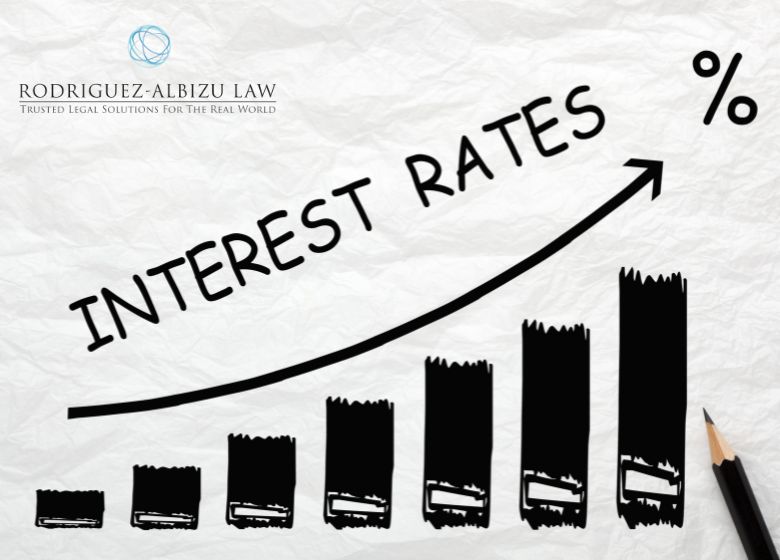The Federal Reserve’s aggressive rate hikes are sending shockwaves through the commercial real estate (CRE) market, raising concerns about the future of financing.
As America entered 2023, leaders in the CRE industry spoke of a “new normal” in the wake of the pandemic and predicted the distorted market would correct itself and the rising interest that ended up defining the year would correct itself, too.
Impact of rising interest rates on CRE financing
Last year’s “Emerging Trends in Real Estate” report by the Urban Land Institute began with the following statement from an experienced executive: “The short-term risks are real, and I’m not making light of any of them. But if you have the long view, I don’t think it’s time to panic.”
The report then went on to make a case for “cautious optimism.”
“Interest rates are rising, economic clouds are darkening, and real estate deal flows are sinking because buyers and sellers cannot agree on pricing,” it states. “But for all that, most commercial real estate professionals we interviewed for this year’s Emerging Trends remain reasonably upbeat about longer-term prospects. Not everyone is as sanguine as the CEO of an investment management firm who provided our opening quote, and there certainly are some troubling risks ahead for the industry. But the consensus mood seems to be one of cautious optimism that we will ride out any near-term slump and be well positioned for another period of sustained growth and strong returns.”
Impact of rising interest rates on CRE borrowing
Nearly $3 trillion in CRE debt is in the hands of U.S. banks. An astounding figure, the debt – and the increased cost of debt on CRE loans – puts financial institutions holding the currency in a vulnerable position.
“CRE relies heavily on debt financing,” according to a Newsweek article titled “Understanding Commercial Real Estate.” “While developers need to contribute some equity, most of the financing for a project is debt. High interest rates make it harder to raise money, as these projects need to compete with the ten-year US treasury bond. That does not even consider the condition of the economy – if it is headed for a downturn, and if the market for a particular type of CRE is changing.”
Let’s take a look at the different types of loans that are available and the impact rising interest rates can have on them.
Fixed rate loans. Fixed rate loans are, by definition, fixed, meaning they are static and will not change with the mood of the economy for the duration of the payoff agreement.
Floating rate loans. Floating rate loans, in contrast, are not static and will change with the times. Because of the risk, floating rate loans are less expensive than fixed rate loans.
Construction-to-permanent loans. Construction-to-permanent loans provide financing on the physical buildout of the property and, when the physical buildout of the property is complete, turn into permanent loans, i.e., mortgages.
Construction-only loans. Construction-only loans provide financing on the physical buildout of the property and are costlier than construction-to-permanent loans. Bankrate explains: “With a traditional mortgage, your home acts as collateral – if you default on your payments, the lender can seize your home. With a home construction loan, the lender doesn’t have that option, so they tend to view these loans as bigger risks.”
Now let’s take a look at how projects are being affected, delayed, scaled back and even canceled.
In New York, the largest of all the CRE markets in the country, sales tanked in the first quarter of 2023, falling by more than half, for a total of $2.2 billion in investments. Further, investments were forecast for $8.9 billion for the year, a far cry from 2022’s $21.2 billion.
Big Apple apartment rentals plummeted 77 percent in the first quarter of 2023 for a total of $430 million. The top deal for that period was a $273.5 million purchase in Lower Manhattan compared with a $2.1 billion purchase in Hudson Square the previous period.
The shifting landscape of CRE capital markets
Prior to the pandemic, less than 15 percent of the U.S. population regularly worked away from the office. Now, employees are wondering whether the traditional brick-and-mortar place of business might be a thing of the past.
“The future of real estate is no longer about delivering four walls to tenants,” RXR Realty CEO Scott Rechler told McKinsey & Company in a blog titled “Reimagining the real estate industry for the next normal.” “Instead, it’s about creating a unique, personalized customer experience that fosters meaningful interactions, collaboration, productivity. Delivering this will require a unique combination of capabilities that seamlessly integrate across the physical and digital realms.”
CRE capital markets outlook 2024
Global leader CDRE forecasts “compelling opportunities” this year and beyond and “bargain pricing” amid rising interest and a sluggish economy.
“Secondary office assets have already seen sharply lower pricing due to rising vacancies, as hybrid working arrangements now appear permanent,” CBRE states in a blog titled “U.S. Real Estate Market Outlook 2024.” “Once interest rates begin to fall and inflation eases further, rehabilitation or conversion of underperforming office buildings to other uses will become more attractive and financially viable.”
To that end, alternative funding sources could be useful. Here are two:
- Private equity. Private equity funds mature companies or those with a solid reputation as opposed to venture capital, which funds startup businesses.
- Mezzanine debt, also referred to as subordinated debt, combines a private equity lender with a lender who takes on a different – and smaller – tier of the investment.
What are the 8 CRE sectors?
In no particular order, the eight CRE sectors are hotels, industrial space, land, mixed-use property, multifamily complexes, office space, retail space and special-purpose real estate. Each of the sectors is designated either Class A (new and high quality), Class B (older and less desirable) or Class C (20 years old and in disrepair).
Strategies for navigating the new market
Lenders seeking CRE financing strategies in a rising rate environment have some options when it comes to navigating the new market. One of them is to target properties that have longer-term leases as those translate into a more stable cashflow. Secondly, always keep a watchful eye on rates and trends.
“Investors seeking to make wise investment decisions must understand how interest rates affect cashflow, property values and cap rates,” Acuity Knowledge Partners suggests. “Investors could manage this difficult climate and make wise investment choices by taking into account fixed-rate financing, concentrating on properties with long-term leases and keeping an eye on market trends.”
In conclusion
The importance of strong underwriting and project fundamentals cannot be highlighted enough as the CRE industry heads into the new year. Nor can seeking professional advice to maximize and protect investments.
“Even when interest rates eventually begin to normalize, I believe banks will likely be slow to back into the real estate lending market sector,” Forbes contributor Richard Mack opines. “In fact, if losses in the sector escalate, it is reasonable for them to further retreat from property loans overall, even if losses are contained to primarily office-backed loans. Nontraditional lenders should capitalize on these opportunities to provide debt at a reduced risk profile and with a higher return than historical averages. In my opinion, this shift in available capital to fund real estate investments further accentuates the long-term opportunities for private lenders.”






